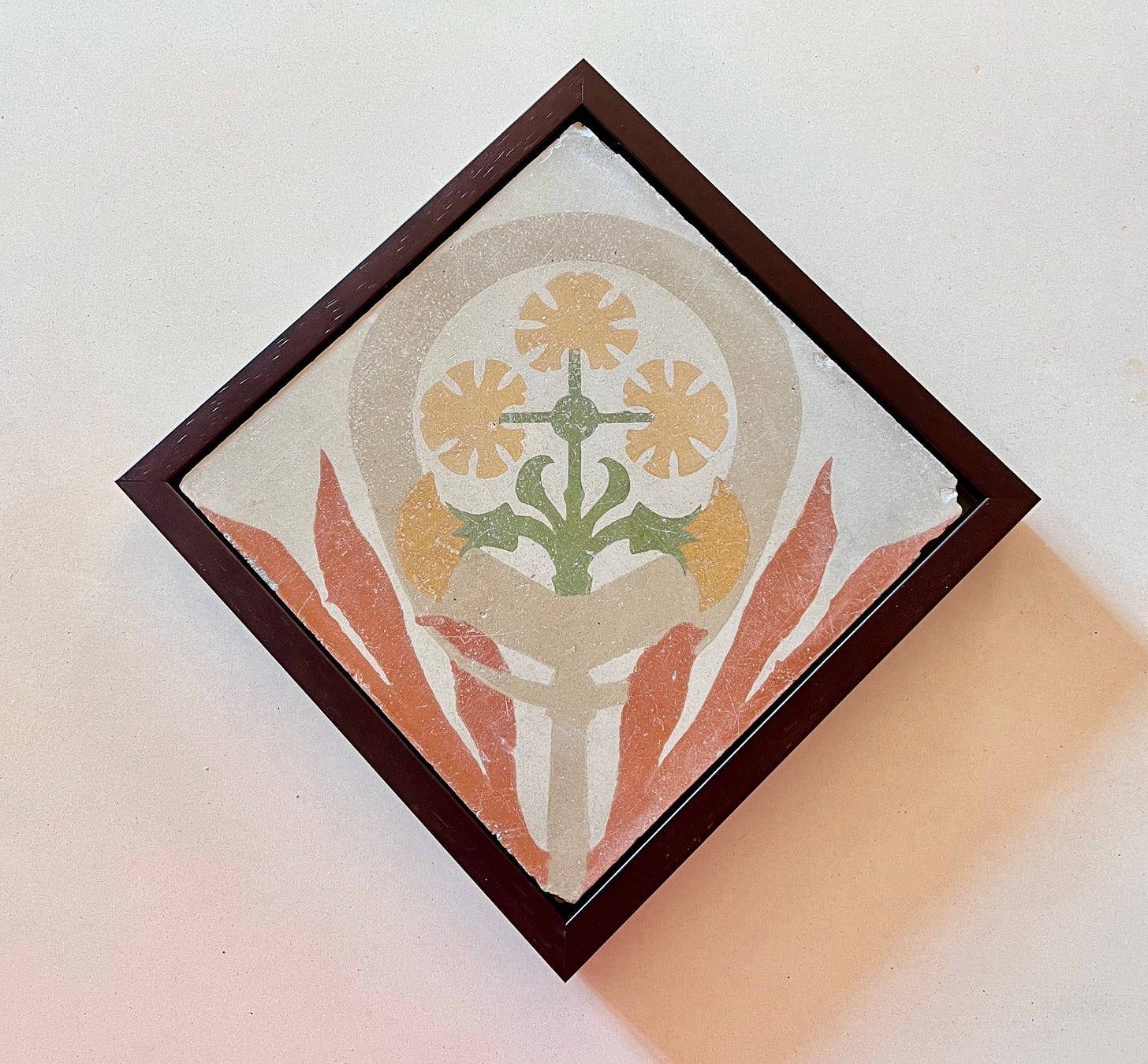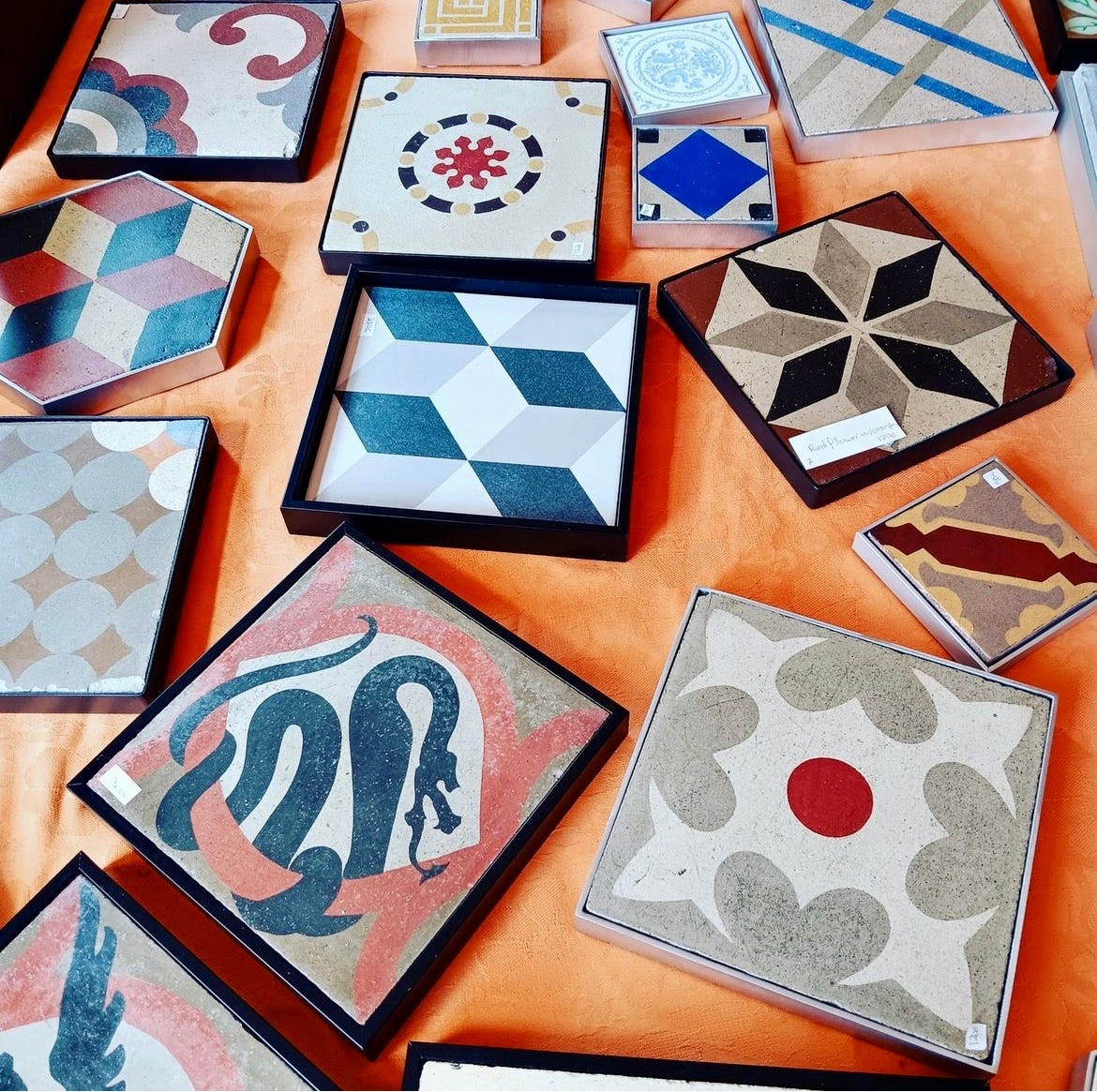There are two types of people in this world; those who can’t walk past a good street find and others who are horrified by touching other people’s throw-outs.
I am very much the former. In Barcelona, people think nothing of ridding their junk on the sidewalk. This is meant to happen on designated days, but in reality, it’s a game of chance. I have found countless treasures, from perfectly acceptable cookware to 1940s wedding portraits. A friend who lives in a fashionable neighbourhood enjoys a weekly haul of discarded designer clothes and shoes, which she gratefully divvies out to others.
The eyes of Bénédicte Bodard are focused on one prize – hydraulic tiles. These colourful tiles were all the rage In Barcelona from around the late 1800s, covering the floors of modernista homes and apartments with vivid geometric patterns and symbols. Made of tinted concrete, they were cost-effective to produce and came to express the flowy embellishment of the art nouveau period. However, they went foul of modern, more acerbic taste. By the time the city’s abundance of fin de siēcle apartments was being renovated for contemporary living, developers were replacing them with linoleum and Ikea parquet and chucking these 20 by 20 cm squares of legacy and loveliness out onto the pavement.
Since around 2000, Bénédicte has been ‘rescuing’ hydraulic tiles from sidewalk skips. What started as a hobby, and throwing a tile or two into her handbag, became a consuming passion and a successful business – Mesa Bonita (Pretty Table).
“In the beginning, I was picking up one tile at a time. Then I put four together one day and realised they would make a lovely tabletop.” This discovery was the founding of her business, which creates small occasion tables, podiums and other objects using found hydraulic tiles on their top surface. “So I started to bring home a lot more. A clean tile weighs 2 kilos, but when it has cement underneath it can weigh up to 5 kilos. So if you want to bring back 10 or 20 – you do the math.”
On one mission, she found a dumped and brand-new Bugaboo stroller which became her sturdy means of transport to lug her tiles back home.
“When it got old I wrote to Bugaboo, told them what I was doing and asked them if they would gift me another one, even a damaged one. Perhaps unsurprisingly, they refused!”
Bénédicte has amassed an astonishing stock of tiles in the cave-like basement of her lovely home. Every day, she spends hours scraping off the layers of raw cement from the underside that was used to fix the tiles to the base floor. These will go to the makers of her furniture line. But mostly people are after loose tiles, to use them as a decorative feature, say around a fireplace or a backsplash. (Finding enough matching antique tiles to cover a complete floor is rare.)
From the thousands of tiles in her stock, I ask what is her most prized find. She explains that one day she was alerted to a drop of tiles outside the Casa Calvet, one of Gaudí’s early works and still a private home. She grabbed as many as she could, but still couldn’t be sure if they were actually chosen by Gaudí or dumped from a neighbouring block designed by another architect.
“Then I visited Gaudí’s home in the Park Güell I saw the same tiles. Then I read an article on how bad Gaudí felt at the project being a financial disaster (Park Güell was a proposed housing estate that never took off) so he started to try to cut corners anyway he could, which is why he used the leftover tiles from the Casa Calvet for his own home. Of course, from the beginning, Gaudí was using tile offcuts – that’s how Trencadis was born. I have spent years trying to put the puzzles together of what tiles came from where and which of the modernista architects used them. But I found this particular story very touching.”







